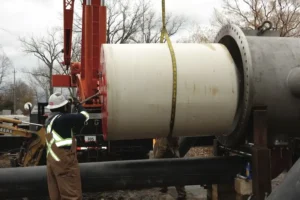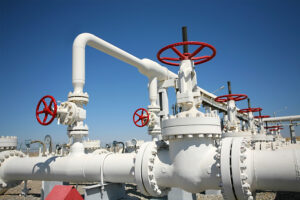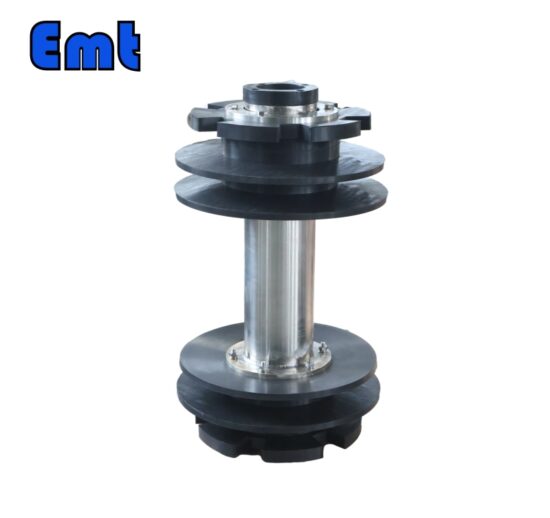Introduction
Definition and Overview of Pipeline Pigging
Pipeline pigging is a maintenance technique that involves the use of specialized devices called “pigs” to clean, inspect, and maintain pipelines. These pigs, which come in various shapes and sizes, are inserted into the pipeline and propelled by the flowing product or by an external force. As they travel through the pipeline, pigs remove debris, sediment, and other contaminants, ensuring optimal flow and preventing blockages. This process enhances the overall efficiency and performance of the pipeline, minimizing energy consumption and maximizing throughput. With its proven effectiveness, pipeline pigging has become a crucial practice in industries such as oil and gas, chemical, and water systems.
Importance of Pipeline Maintenance and Efficiency
Efficient and well-maintained pipelines are essential for the smooth operation of various industries, ensuring the reliable transportation of fluids, gases, and other substances. Regular maintenance of pipelines is vital to prevent issues such as flow restrictions, corrosion, and contamination, which can lead to costly disruptions, environmental hazards, and compromised product quality. By implementing pipeline pigging techniques, companies can proactively address these concerns, prolonging the lifespan of their pipelines and minimizing the risk of unplanned shutdowns. Additionally, efficient pipeline operations contribute to reduced energy consumption, lower operating costs, and improved environmental sustainability. Therefore, prioritizing pipeline maintenance and efficiency through pigging is a strategic investment for any industry reliant on pipeline infrastructure.
Understanding Pipeline Pigging
Types of Pigs Used in Pipeline Operations
Cleaning Pigs
Cleaning pigs are specifically designed to remove debris, sediment, and other deposits from the pipeline walls. These pigs are equipped with brushes, scrapers, or other cleaning mechanisms that effectively dislodge and remove contaminants, ensuring a clean and smooth inner surface. By eliminating build-up, cleaning pigs help maintain optimal flow rates, reduce pressure drops, and prevent potential blockages.
Inspection Pigs
Inspection pigs, also known as smart pigs or intelligent pigs, are advanced devices equipped with sensors and data recording capabilities. These pigs traverse the pipeline, collecting valuable information about the pipeline’s condition, such as wall thickness, cracks, corrosion, and other defects. The data collected by inspection pigs enables operators to assess the integrity of the pipeline, identify potential issues, and plan maintenance and repair activities accordingly.
Utility Pigs
Utility pigs are versatile pigs that serve multiple purposes in pipeline operations. They can combine cleaning and inspection functionalities, allowing for a comprehensive assessment of the pipeline’s condition while simultaneously removing debris. Utility pigs can also be used for other tasks, such as product separation in multi-product pipelines or batching operations, where different products are transported sequentially.
Pigging Process and Equipment
Launcher and Receiver
The pigging process involves the use of specialized equipment, namely a launcher and a receiver. The launcher serves as the entry point for introducing the pig into the pipeline, while the receiver is where the pig is retrieved at the end of the pigging run. These components are meticulously designed to ensure a seamless and secure pig launch and recovery process. To maintain pressure integrity during pig insertion and removal, both the launcher and receiver are equipped with closure mechanisms. These closure mechanisms, including quick-opening closures, play a critical role in safeguarding the pipeline’s pressure integrity throughout the pigging operation.
Pig Tracking and Monitoring Systems
To monitor the progress of the pig within the pipeline, pig tracking and monitoring systems are important. These systems use various techniques, such as magnetic flux leakage, ultrasonic sensors, or GPS-based tracking, to determine the pig’s location, speed, and movement. Real-time data from these systems allows operators to track the pig’s progress, identify any deviations or obstructions, and ensure that the pig is effectively traversing the pipeline.
Furthermore, in pipeline operations, different types of pigs serve specific functions. Firstly, cleaning pigs plays a crucial role in maintaining pipeline cleanliness. Secondly, inspection pigs provide valuable data for assessing pipeline integrity. Lastly, utility pigs offer versatility in performing various tasks. Moving on to the pigging process and equipment, the launcher and receiver are essential components that facilitate pig insertion and retrieval. Additionally, pig tracking and monitoring systems enable real-time monitoring of the pig’s movement within the pipeline.
Implementing Pipeline Pigging Programs
Pipeline Pigging Frequency and Scheduling
Determining the frequency of pipeline pigging is essential to ensure effective maintenance and optimal performance. Factors such as the pipeline’s operating conditions, product characteristics, and historical data play a crucial role in establishing an appropriate pigging schedule. Regular inspections and analysis can help identify trends and patterns that aid in determining the ideal pigging frequency. By adhering to a well-planned schedule, operators can proactively address potential issues, minimize downtime, and maximize the lifespan of the pipeline.
Preparing for Pigging Operations
Proper preparation is key to the success of pigging operations. This involves several important steps, including thoroughly cleaning the pipeline before pigging, ensuring the availability of necessary equipment, and preparing the launcher and receiver for pig insertion and retrieval. It is crucial to inspect and maintain all pigging equipment to guarantee smooth operations. Adequate communication and coordination among the involved personnel, including operators, maintenance teams, and pigging service providers, are essential to ensure a well-executed pigging operation.
Safety Considerations and Risk Mitigation
Safety is of paramount importance in pipeline pigging programs. Operators must conduct a comprehensive risk assessment before initiating pigging operations. This includes identifying potential hazards, implementing appropriate safety measures, and providing training to personnel involved in the pigging process. Safety protocols should cover aspects such as personal protective equipment (PPE), lockout/tagout procedures, and emergency response plans. Regular audits and inspections should be conducted to ensure compliance with safety standards and regulations.









There are no reviews yet.